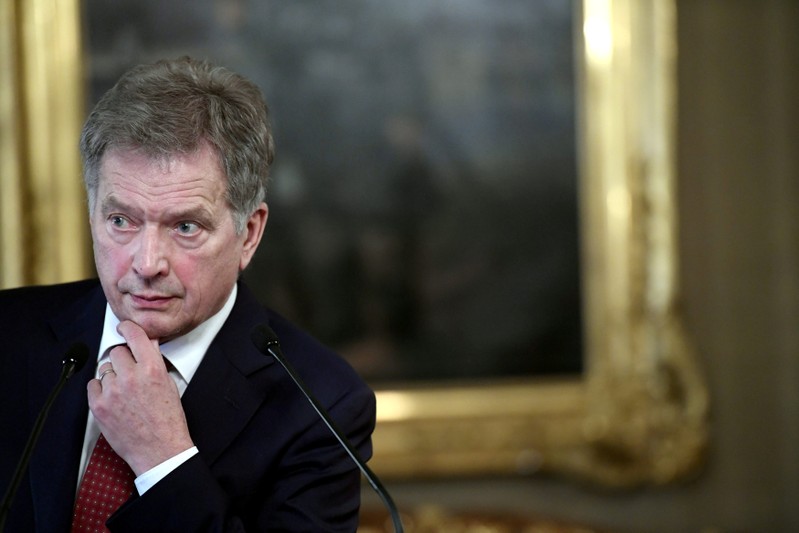
FILE PHOTO: President of Finland Sauli Niinisto attends a joint news conference in Helsinki, Finland November 6, 2017. Lehtikuva/Heikki Saukkomaa via REUTERS/File Photo
January 24, 2018
By Jussi Rosendahl and Tuomas Forsell
HELSINKI (Reuters) – Finns are expected to re-elect moderate Sauli Niinisto for a second six-year term in elections on Sunday, counting on his skill and caution to ensure a close relationship with NATO without antagonizing neighboring Russia.
Niinisto, 69, is credited with helping Finland perform a delicate balancing act between the Kremlin and the U.S.-led military alliance, of which it is not a member but with which it developed closer ties after Moscow annexed Crimea in 2014.
Latest opinion polls by Alma Media and Helsingin Sanomat show support of 58-68 percent for Niinisto, who is originally from conservative National Coalition Party (NCP) – a member of Helsinki’s ruling coalition – but campaigns as an independent.
His closest rival, Pekka Haavisto of the Greens of Finland, has the support of 11-14 percent of respondents in the polls, while six other candidates share a combined backing of 21-28 percent.
Many Finns are wary of Russia, with which their Nordic country shares a 1,340 km (833 miles) border and a history of two wars between 1939 and 1944 which cost Finland substantial territory.
Though the role is largely ceremonial, the president oversees foreign policy, an area dominated by debate on NATO membership and relations with Russia.
Though most people will vote on Sunday, 36 per cent of voters cast their ballot in a week of advance polling which closed on Tuesday.
If no candidate gets half of the votes on Sunday, a second round between two most voted candidates takes place on Feb. 11.
“We can’t do anything about the fact that Russia is our neighbor, and it is good to be on good terms with neighbours,” said pensioner Olle Relander after casting his vote for Niinisto in an advance polling station in Helsinki.
Though Finland backs western economic sanctions against Russia, Niinisto has appeared as a low-profile middle-man between East and West – a sharp contrast to his Baltic counterparts who regularly speak out against Moscow.
He was the first western leader to meet Russian president Vladimir Putin following the annexation of the Ukrainian peninsula.
Attending a NATO summit in Warsaw in July 2016, along with Sweden, he also actively pushed for an air safety agreement between Russia and the alliance in the Baltic region after a series of near misses between Russian jets and commercial European airlines.
“In today’s circumstances, or any that can be foreseen … I think we have no reason to seek NATO membership,” Niinisto said in a TV interview with public broadcaster YLE this month.
“But, if Russia suddenly starts to see the whole of the West as an enemy, as it views NATO at the moment, then we are in a different situation,” he said.
Public backing for joining NATO has lingered around 20 percent for years, although it briefly edged up in 2014 after Russia’s action in Crimea.
Apart from his long service in politics, Niinisto also taps into much sympathy among Finns because of a series of personal dramas.
A lawyer by training, Niinisto was the finance minister in the 1990s, becoming known for his government’s heavy austerity measures following Finland’s depression, as well as the decision to join the euro area.
Quick-tempered in politics, he lost his first wife in a car accident in 1995. He survived the deadly 2004 Indian Ocean earthquake and tsunami by climbing up an electricity pole in Thailand with his son.
(Reporting by Jussi Rosendahl and Tuomas Forsell; Editing by Richard Balmforth)

